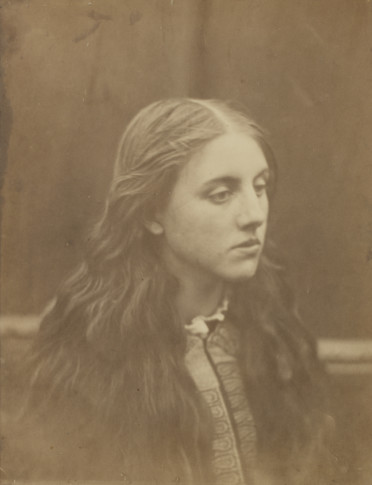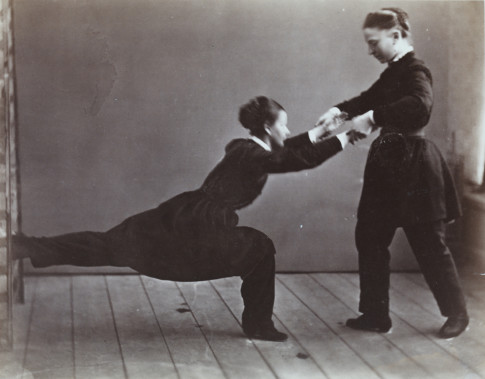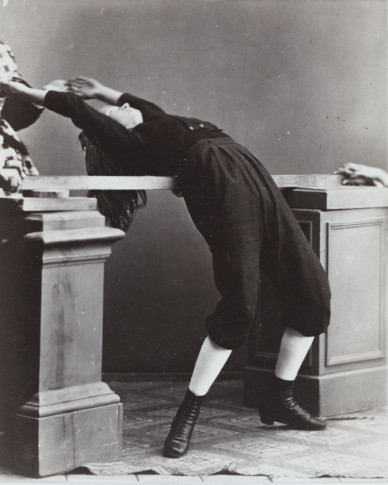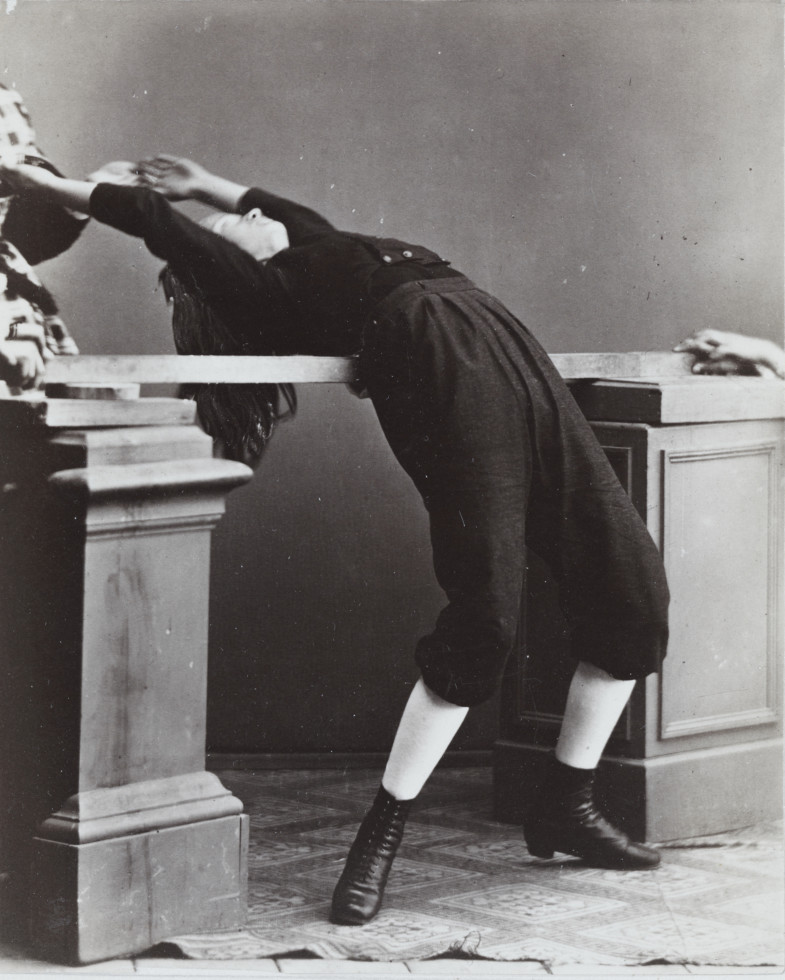
Carl Jacob Malmberg, From the series Gymnastics, ca 1875
Photographic materials
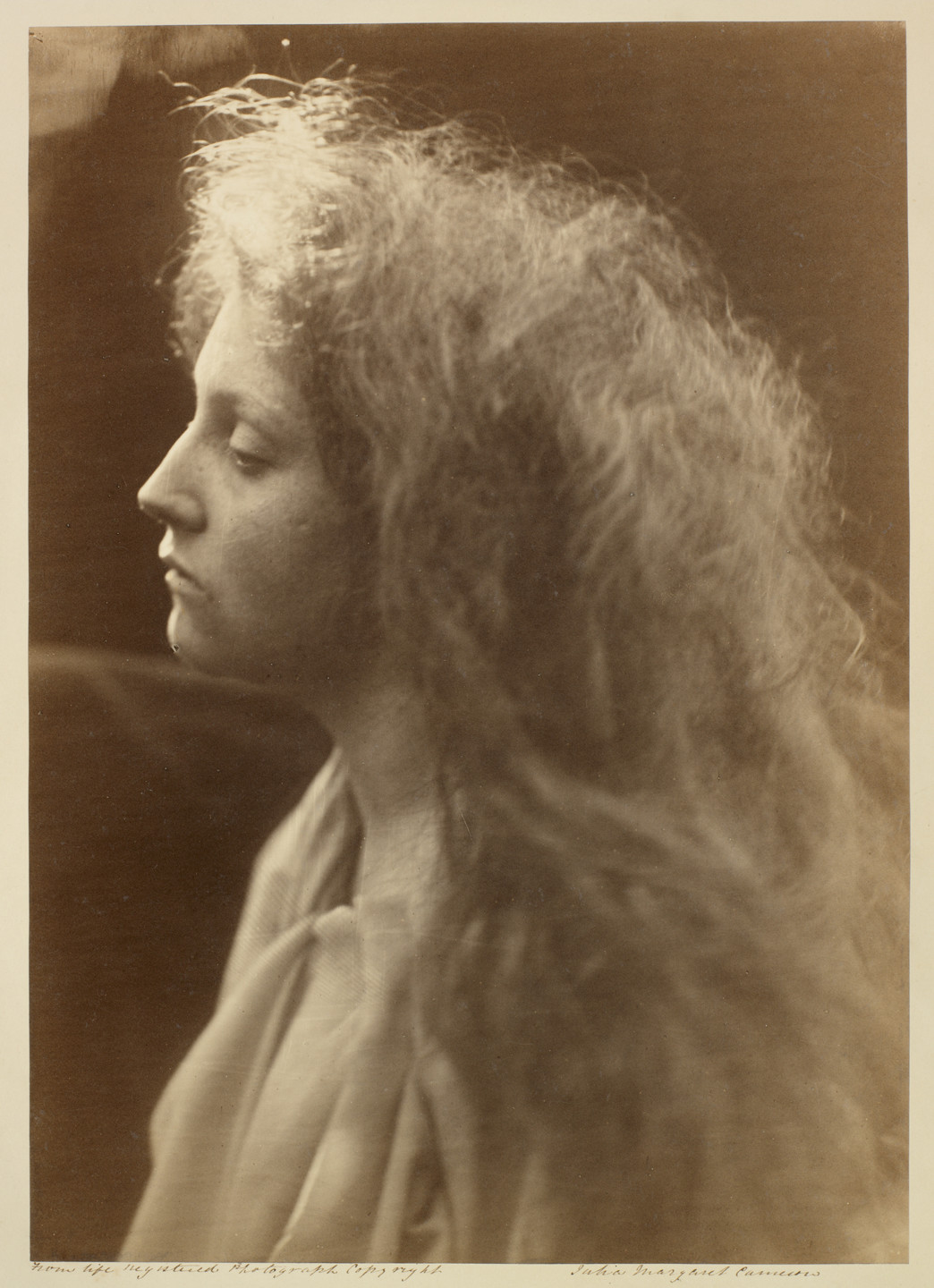
You get a presentation of the commonly accepted definitions of various photographic methods and materials, the period when they were in use, the properties of the final image, a description of the technique used, characteristic features, and ways of identifying the material.
Albumen Silver Print
1850–ca 1900
silver in albumen on paper
A paper is brushed with a solution of albumen (egg white) and table salt and is allowed to dry. It is then bathed in silver nitrate and again allowed to dry, this time in darkness. Albumen, salt and silver form an emulsion containing light-sensitive silver salts which are exposed in daylight in direct contact with a negative until the desired image appears (printing-out). Residual light-sensitive silver salts are then removed through fi xation, and the picture is washed in water. After 1855, most albumen silver photographs were goldtoned, followed by additional fi xation and rinsing. Commercially produced albumen silver paper became available in 1863. Albumen silver prints have a thin paper support and are therefore normally mounted. The surface is usually glossy, and the tone may vary from yellow/red/brown to a violet blue, depending on exposure time and toning. Prints commonly change in tone to yellow/yellow-green in high-keys due to deterioration of the albumen. In magnification characteristic cracks can be seen.
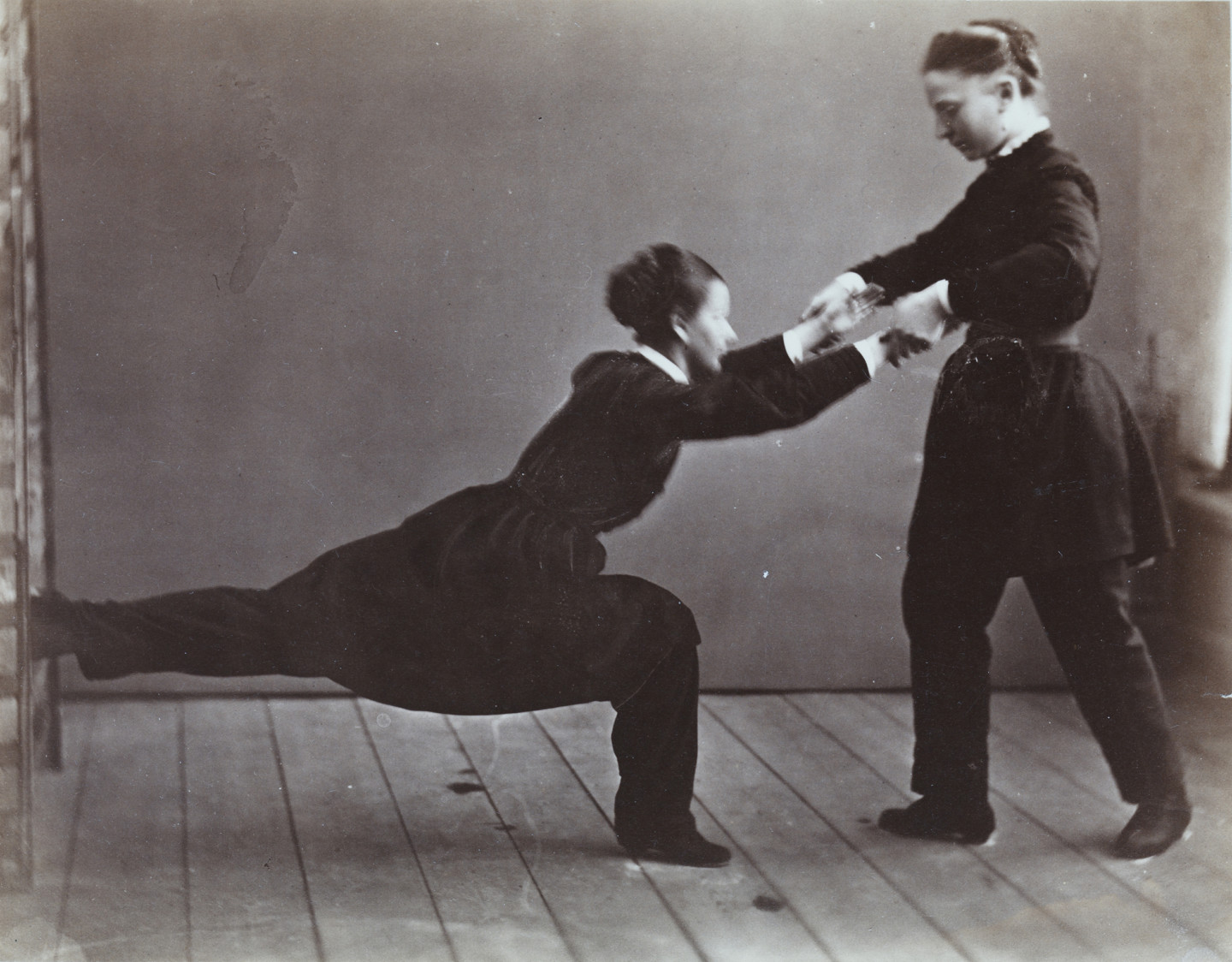
Daguerreotype
1839–ca 1865
amalgam on silver-coated copper
A copper plate is coated with a thin layer of silver, buffed and treated with iodine vapour in a closed container, transforming the silver to light-sensitive silver iodide. After being exposed in the camera for 10–30 minutes, the image is developed in heated mercury vapour. Silver and mercury form a white amalgam and the image is a reverse, low contrast positive. The picture was initially fixed in a saline bath, later in a bath of sodium sulphite. A subsequent toning in gold solution strengthened the sharpness and stability of the image. To protect the image against chemical and physical damage, the plate was tightly sealed with mats and glass and often enclosed in a case. Daguerreotypes are detailed, neutral in tone, sometimes hand-tinted, and are easily distinguishable by their alternately negative and positive impressions, depending on the angle of the light in which they are viewed.
Salted Paper Print, Calotype
1839–ca 1870
silver in common salt on/in paper
A paper is first soaked in a saline solution and then brushed on one side with silver nitrate, forming light-sensitive silver chloride. After allowing the paper to dry in the dark, it is exposed in sunlight for hours, in contact with a negative, until the image appears (printing-out). Excess silver chloride is then subjected to fixation in a strong saline solution or in sodium thiosulphate and is rinsed away in water. Subsequent gold toning (after 1849) lent the picture a richer tonal range and greater permanence. After 1950 they were often waxed and/or sometimes coated with a layer of albumen. Salted paper prints have a matte finish, and the paper fibres of the support are clearly visible in magnification. When fixed in salt, the image tone is reddish brown; in sodium sulphate it is a yellowish orange. Permanence is relatively low, and when faded or discoloured the prints turn to a yellowish brown. This technique was the first used to reproduce an image on paper from a negative. Although the term calotype is sometimes used, a calotype is actually a salted paper negative.
A definite advancement in the process of creating negatives was made by the British Frederick Scott Archers (1813–1857), who discovered how to use glass sheets for negatives instead of paper. Collodion was used to bind the necessary silver salt to the glass, but it could only be exposed while wet, hence the term wet plate process. The glass negatives gave sharp details, and a large number of paper prints could be made from one negative.
Learn more about early photographic processes from George Eastman Museum: Photographic Processes Series på Youtube

